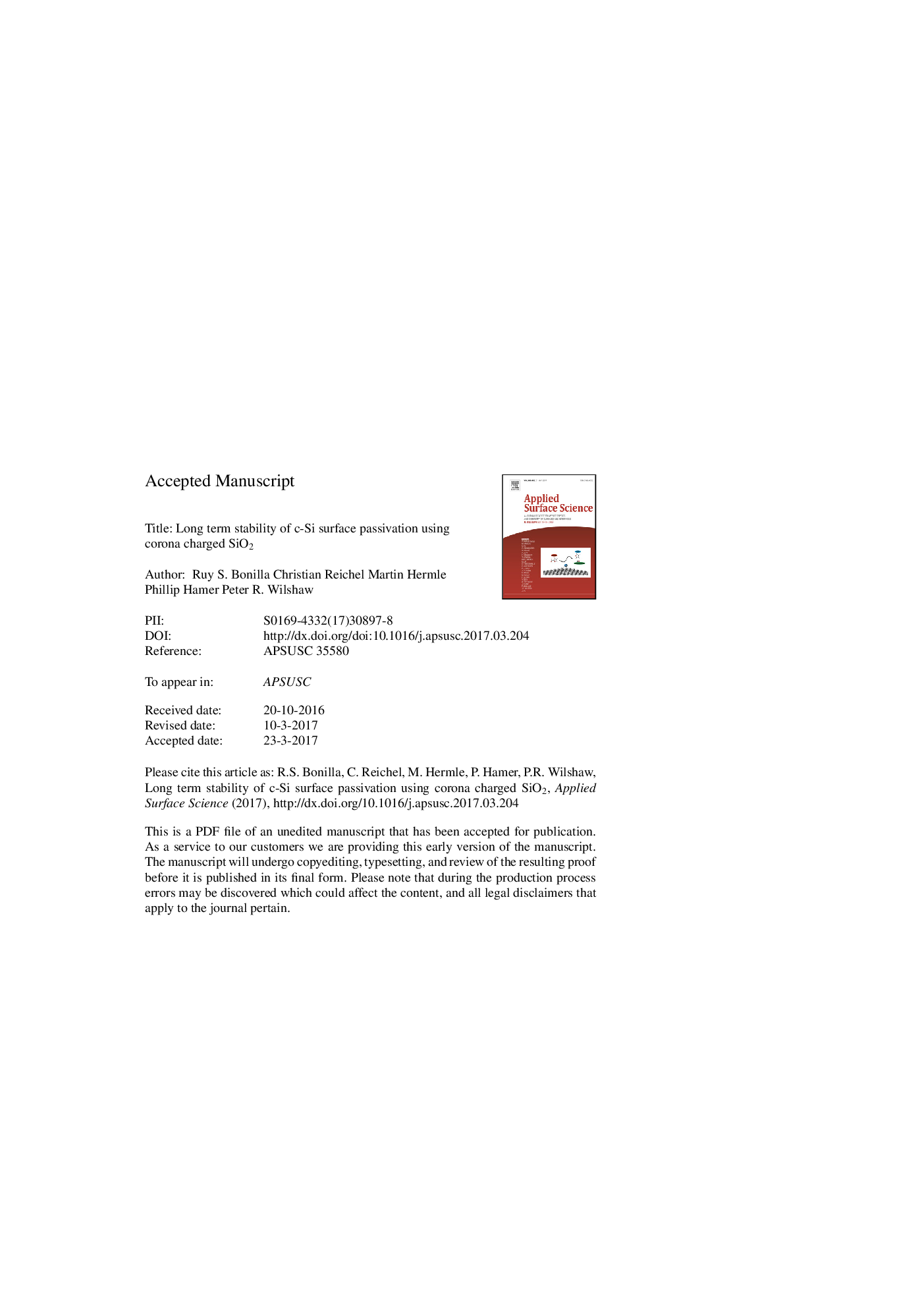| کد مقاله | کد نشریه | سال انتشار | مقاله انگلیسی | نسخه تمام متن |
|---|---|---|---|---|
| 5347076 | 1503557 | 2017 | 24 صفحه PDF | دانلود رایگان |
عنوان انگلیسی مقاله ISI
Long term stability of c-Si surface passivation using corona charged SiO2
ترجمه فارسی عنوان
پایداری طولانی مدت سیلیسیم سی با استفاده از کرونا متخلخل
دانلود مقاله + سفارش ترجمه
دانلود مقاله ISI انگلیسی
رایگان برای ایرانیان
کلمات کلیدی
موضوعات مرتبط
مهندسی و علوم پایه
شیمی
شیمی تئوریک و عملی
چکیده انگلیسی
Recombination at the semiconductor surface continues to be a major limit to optoelectronic device performance, in particular for solar cells. Passivation films reduce surface recombination by a combination of chemical and electric field effect components. Dielectric films used for this purpose, however, must also accomplish optical functions at the cell surface. In this paper, corona charge is seen as a potential method to enhance the passivation properties of a dielectric film while maintaining its optical characteristics. It is observed that corona charge can produce extreme reductions in surface recombination via field effect, in the best case leading to lifetimes exceeding 5 ms at an injection of 1015 cmâ3. For a 200 μm n-type 1 Ω cm c-Si wafer, this equates to surface recombination velocities below 0.65 cm/s and J0e values of 0.92 fA/cm2. The average improvement in passivation after corona charging gave lifetimes of 1-3 ms. This was stabilised for a period of 3 years by chemically treating the films to prevent water absorption. Surface recombination was kept below 7 cm/s, and J0e < 16.28 fA/cm2 for 3 years, with a decay time constant of 8.7 years. Simulations of back-contacted n-type cells show that front surface recombination represents less than 2% of the total internally generated power in the cell (the loss in power output) when the passivation is kept better than 16 fA/cm2, and as high as 10% if front recombination is worse than 100 fA/cm2.
ناشر
Database: Elsevier - ScienceDirect (ساینس دایرکت)
Journal: Applied Surface Science - Volume 412, 1 August 2017, Pages 657-667
Journal: Applied Surface Science - Volume 412, 1 August 2017, Pages 657-667
نویسندگان
Ruy S. Bonilla, Christian Reichel, Martin Hermle, Phillip Hamer, Peter R. Wilshaw,
